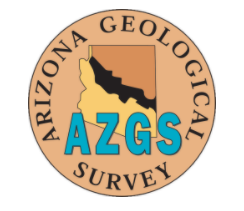Haboobs, drought, extreme heat & cold, torrential rains, dust devils and tornadoes, and hurricanes
Meteorological events beyond-the-norm that threaten people, property, landscapes and livestock are collectively referred to as ‘severe weather’. Arizona’s summer monsoon brings torrential rains whose byproducts – debris flows, flash floods, and landslides (slump, rockfall and slide) threaten Arizonans, their infrastructure and property. in July 2017, a debris flow – flash flood near Payson, Arizona swept away and killed 10 members of a single family.
Since the late 1990s, Arizona has been experiencing below-normal precipitation. Drought! Drought coupled with higher-than-normal summertime temperature threatens Arizona’s water supply, forests, and environmental health. Paleoclimatic indicators provide evidence of drought in the Southwestern US of 50 years or more (Woodhouse and Overpeck, 1997).
Severe weather encountered in Arizona, includes:
- Severe cold weather
- Severe hot weather – Phoenix has recorded temperatures over 120 F on rare occasions.
- Torrential rains
- Ice storms at higher elevations
- Haboobs – severe sand storms
- Hurricanes
- Tornadoes
- Dust devils
- Downbursts and microbursts
Severe weather has cascading effects, too; debris flows and flash floods, and record wildfires and an ever expanding wildfire season due to the past decade’s drought.
It is beyond the scope of the Arizona Geological Survey to monitor or record individual weather events or to document meteorological trends.
For those interested in meteorology and weather-related phenomenon in Arizona, we strongly recommend you consult the National Weather Service sites for your area.
National Weather Service (NWS) – Phoenix : Central & SW Arizona
NWS – Flagstaff : Northern and eastern Arizona
NWS – Tucson : South-central and southeastern Arizona
NSW – Las Vegas for weather conditions in western Arizona.
Woodhouse and Overpeck, 1997, 2000 years of drought variability in the central United States, Bulletin of the American Meteorological Society, v. 79, #12, p. 2693-2714.
Meteorological Resources
Natural Hazards in Arizona
Interactive map highlights fissures, floods, fires, earthquakes, and fault lines in Arizona.





